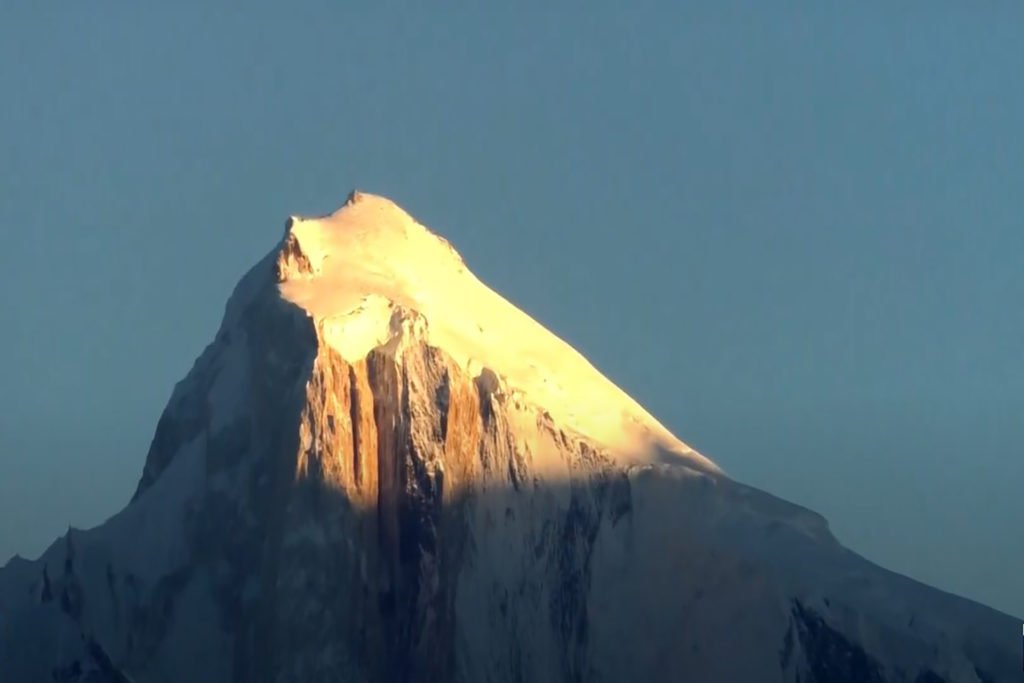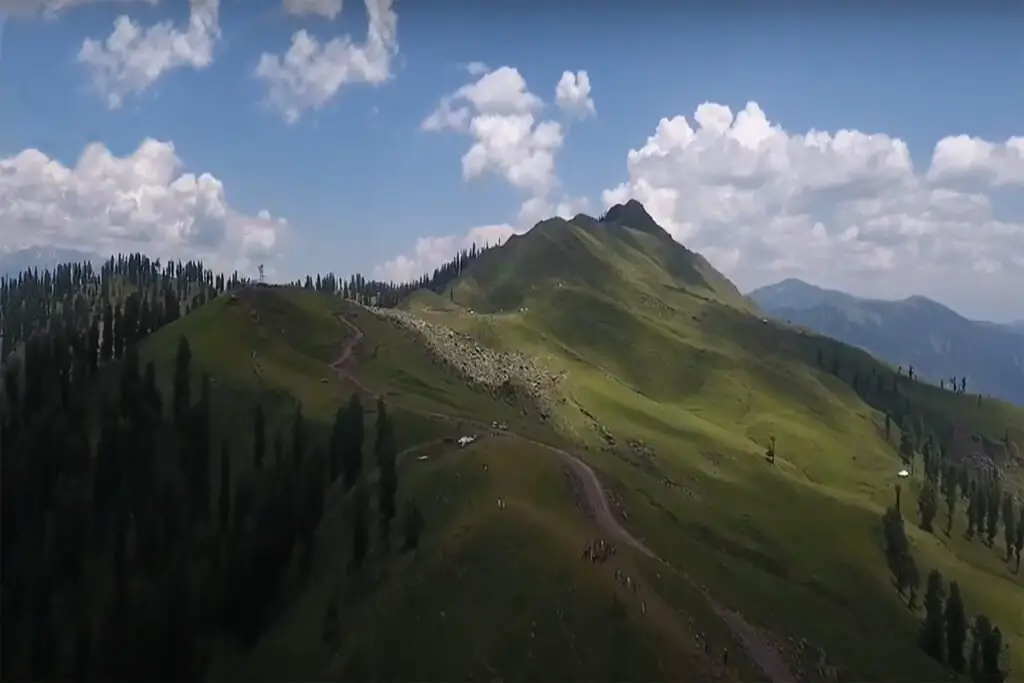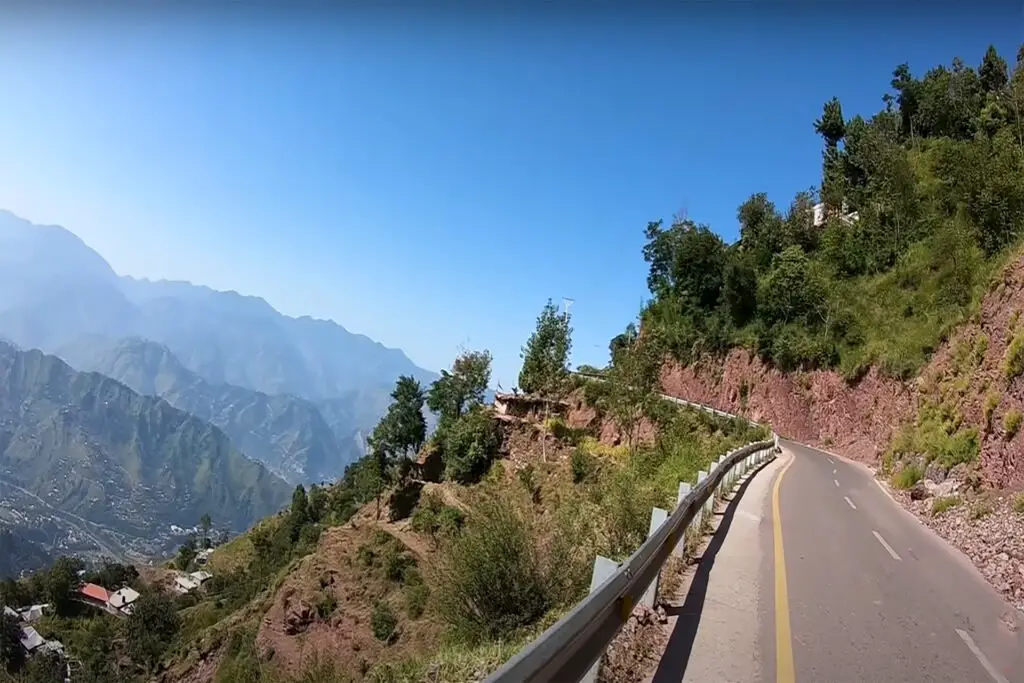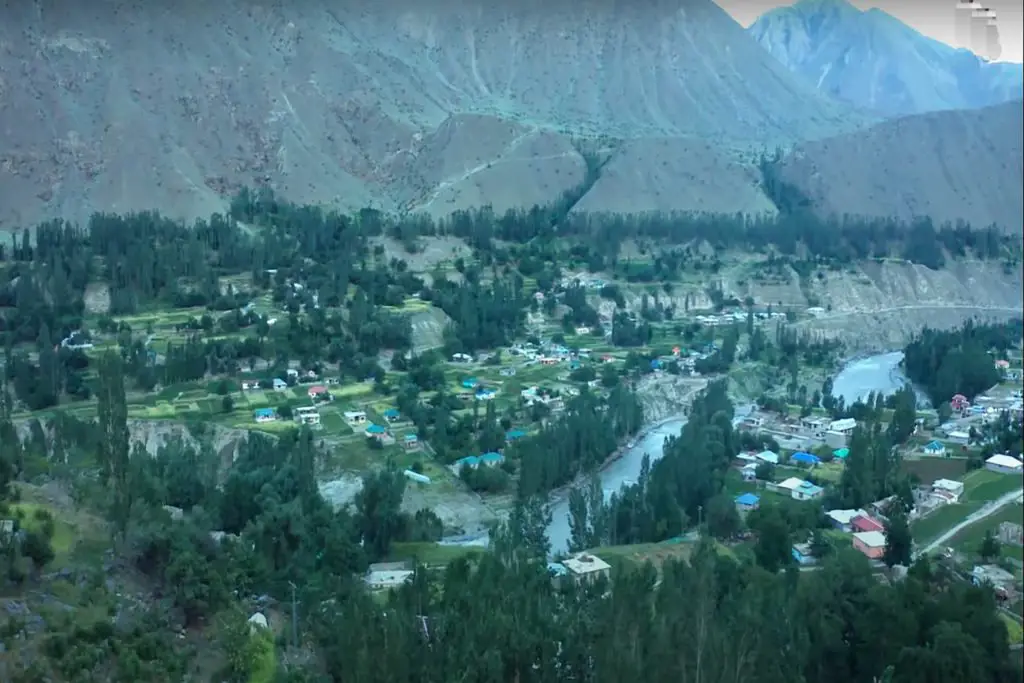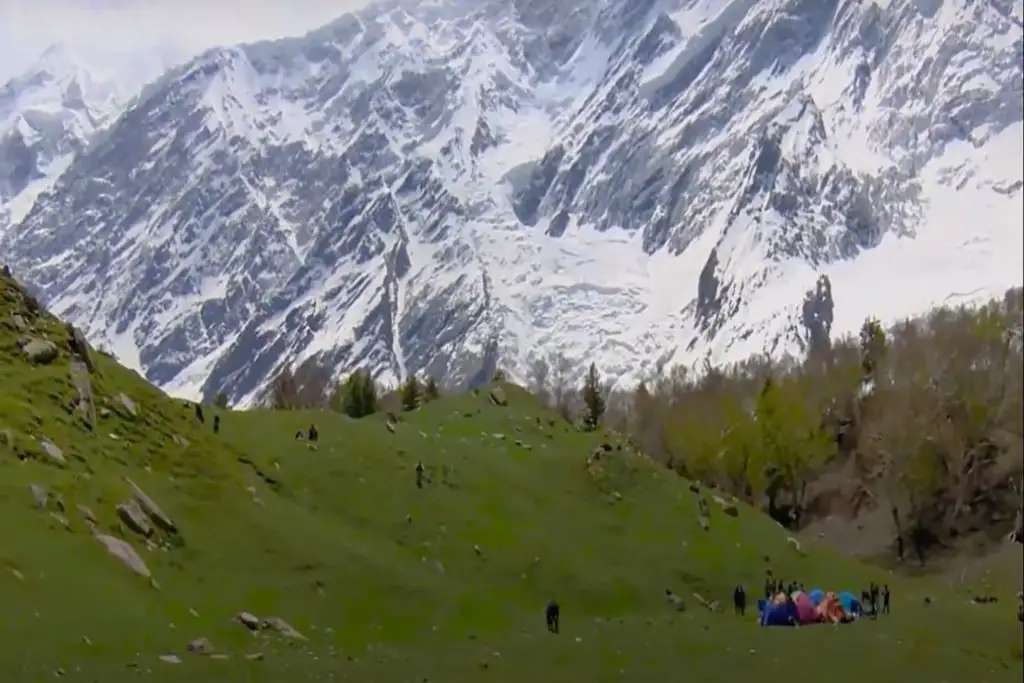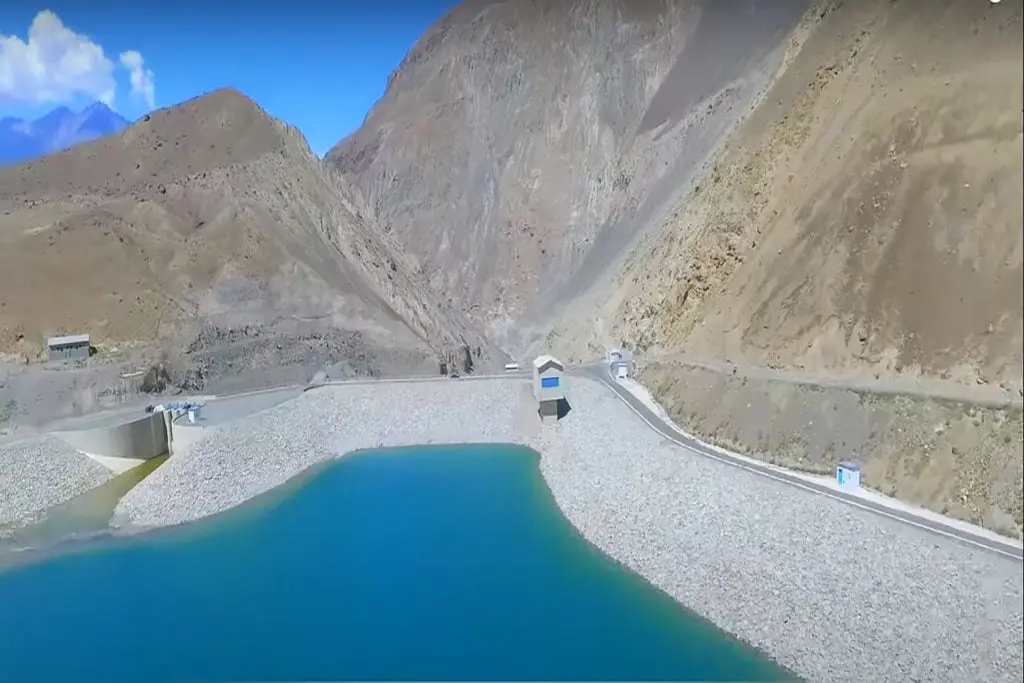Spantik (Balti Language) or Golden Peak is a mountain in Spantik – Sosbun Mountains subrange of Karakoram in Hispar Valley of Shigar District, Gilgit-Baltistan region of Pakistan. Its northwest face features an exceptionally hard climbing route known as the “Golden Pillar”. Spantik Golden Peak Gilgit lies east of Diran and northeast of Malubiting. The trek and adventure route to this peak is from the Arandu village of District Shigar. This peak can climbed from the Arandu side.
Spantik was first climbed in 1955 by Karl Kramer’s German expedition. The most commonly climbed line follows the southeast ridge, which was attempted by the Bullock Workman party in 1906. The ridge rises 2700 meters over a lateral distance of 7.6 km, at angles that are mostly less than 30 degrees, with a few sections up to 40 degrees. It contains varied terrain, from rocky outcrops to snow and ice and scree.
Situated in the heart of the Pakistani Himalayan Mountains, at the very north of the country, Spantik Peak is a remote but popular high-altitude destination.
Elevation of Spantik Golden Peak Gilgit
Rising to 7,027 meters in elevation, the locals refer to Spantik as the Golden Pillar, for the incredible golden-yellow hue the mountain turns during the sunset.
Along the way, from Islamabad to Golden Peak, travelers will enjoy an incredibly scenic approach through verdant valleys surrounded by snow-capped peaks. Afterward, expect a long and challenging ascent through glaciated valleys and up behind the peak.
Spantik Peak has recently gained immense popularity among mountaineers from across the world, thanks to its beautiful and majestic appearance.
Is Spantik Peak hard?
Accessibility to Spantik is relatively easy, yet the peak is still located in a far-flung area. Thanks to the easy access and its location in a safe atmosphere, Spantik has witnessed a rise in the number of expeditions attempting to summit her each year.
Getting to the Spantik base camp requires at least 3 days. You would see yourself trailing across a glacial system, and it is always judicious to stick with your guide if you want to arrive at the base camp safely. Despite the easy accessibility, the route to the summit of Spantik is reasonably difficult. You have to take the northwest face, also called the Golden Pillar, to get a toehold.
The good news is that out of all the expeditions to Spantik so far, 80 percent have summited it with success. However, your success relies heavily on your skills, fitness, acclimatization, weather conditions, and your propensity to go the extra mile.
The expedition can range from 15-35 days depending on weather windows and is known as a non-technical peak, although it wasn’t quite just a trekking peak either. The long approach, deep snow, and rough weather made this a challenging adventure and a great introduction to Mountaineering.
First Pakistani to climb the Spantik Peak
The first Pakistani to climb Spantik Peak (also known as Golden Peak) was Nazir Sabir. He climbed the peak in 1987, along with two other climbers, Sher Khan and Rajab Shah. Nazir Sabir is a renowned Pakistani mountaineer, who has also climbed K2, the second-highest mountain in the world, and all five 8,000-meter peaks in Pakistan. He has made significant contributions to the development of mountaineering in Pakistan and is a recipient of numerous national and international awards.
SPANTIK PEAK BASECAMP TREK DETAILS
- Distance: One Way Distance of BaseCamp is 42 km.
- Days required: Almost 5 days are required, 3 days for climbing up the trek, and 2 days for return.
- Total Incline: 2,500m of incline throughout the three-day journey to base camp.
- Difficulty: The three-day trek to Spantik base camp is non-technical and quite manageable for most hikers. While there is around 600-1000m of elevation each day, the undulating terrain gives moments of respite and recovery with easy walking. The toughest and only dangerous part of this route is the time spent on the glacier on the third day. The route needs to be chosen to help you avoid the many crevasses and steep drop-offs.
- Permits: It isn’t possible to hike independently and you must book with a guide and a registered tour operator.
- Guide: A guide is required on this trek and the guide manages all of the logistics, distances, directions, and camping sites. The directions weren’t always very clear regarding the path. The glacier imparticular was like a maze and a local guide was 100% necessary.
- Accommodation: Each night you will camp at an incredibly scenic campsite.
CLIMBING DETAILS FOR SPANTIK PEAK
Camp 1:(5100m), 5 hrs: The route from base camp to Camp 1 begins on grass from base camp, before ascending a solid rocky ridge. Camp 1 is located just before the snowline and is your last chance to wear trekking boots.
Camp 2: (5650m), 4-5 hrs: The climb from Camp 1 to 2 is mostly easy walking on moderately angled snow but requires the occasional crevasse to be crossed.
Camp 3: (6295m), 5-6 hrs: Situated on a wide plateau, Camp 3 has incredible views over the Hindu Kush and Karakoram. The climb from Camp 2 to Camp 3 includes the steepest slopes at 30-45 degrees on which a fixed line will be placed for security for our ascent and descent. A gamer and belay device will be used to ascend and descend this route.
Summit: The climb from Camp 3 to the summit of Spantik usually takes around 7 to 10 hours and will be climbed alpine style, with the expedition group divided into rope teams.
Gear Required for Golden Peak
- Sunglasses
- 1 Neck Buff
- Gloves
- Hiking boots
- Microspikes
- Headtorch
- Helmet
- Crampons
- 6000-8000m climbing boots
- Descender
- Carabiners
- Warm mitts or high-altitude gloves
- Glacier glasses
- Harness
- Gaiters
- 1 pair of warm summit socks
- 3 pairs of regular socks
- Sunscreen
- Trekking poles
- Water filter
- Powerbank
- Camera

